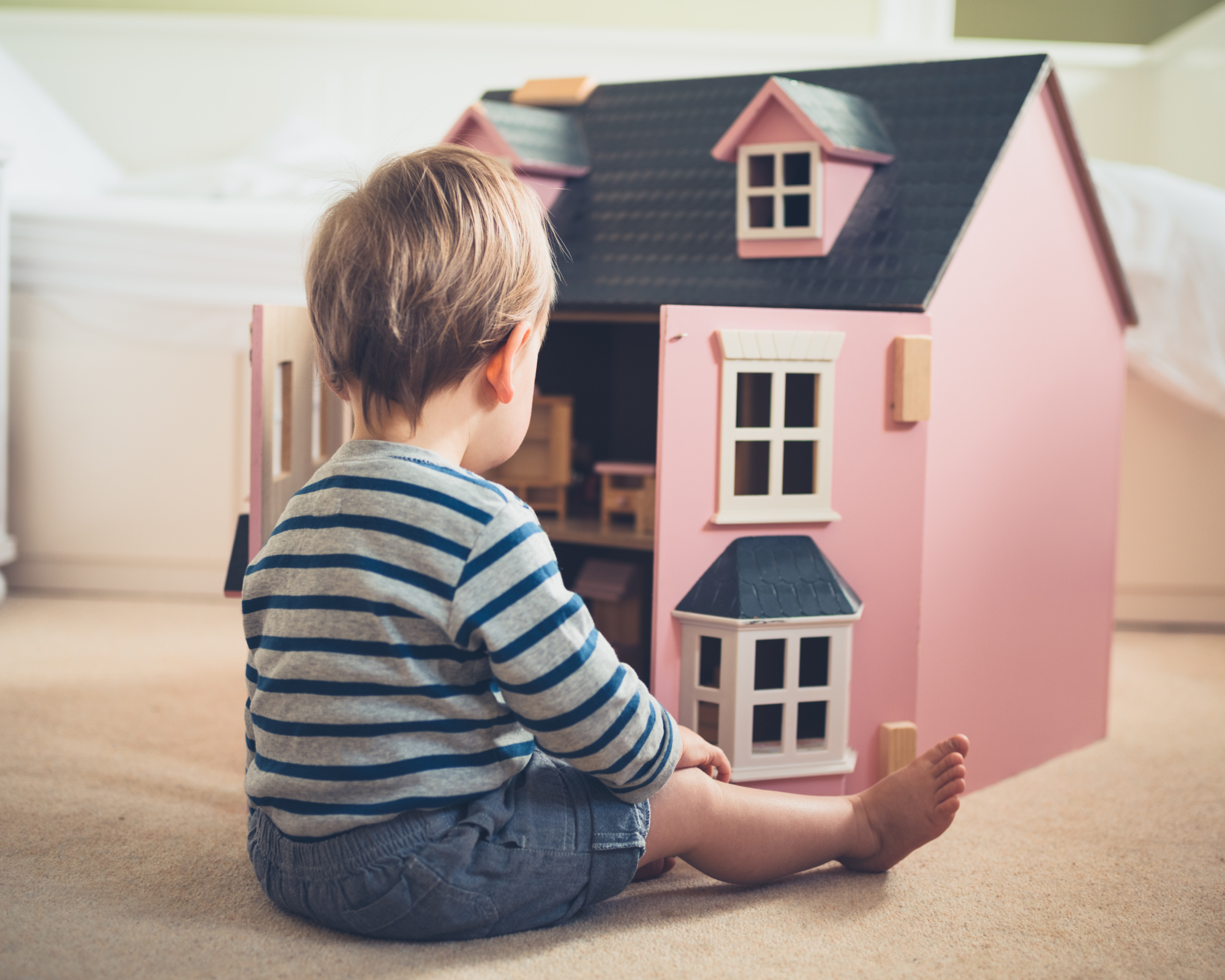Play is an essential aspect of childhood development, fostering physical, cognitive, and social growth. However, the relationship between gender and play has been a topic of increasing discussion in recent years. From attitudes toward risky play, to the suitability of gendered clothing, all the way to public planning, there is a lot to talk about when it comes to gender and play.
Risk
Risky play includes activities like climbing trees and exploring uneven terrain. It offers children valuable opportunities to develop risk assessment and decision-making skills. However, not all children get to explore risk in the same ways. Attitudes towards risky play often differ based on gender. Society tends to perceive boys engaging in such activities as adventurous, while girls are often discouraged or even prohibited. A boy climbing a tree might be allowed to climb higher, whereas a girl will be told to “be careful” much sooner. This gendered perception of risk influences children’s perception of their own capabilities and may hinder the development of important life skills.
Clothes and Shoes
Children’s clothing and footwear are often unnecessarily gendered. This limits their comfort and freedom during play. Traditional gender norms prescribe that  girls wear dresses and boys wear trousers, yet these choices can restrict movement and limit play possibilities. It is harder to hang upside down in a skirt,
girls wear dresses and boys wear trousers, yet these choices can restrict movement and limit play possibilities. It is harder to hang upside down in a skirt,  and tighter clothes can make different movements more difficult.
and tighter clothes can make different movements more difficult.
As well as this, girls clothes tend to be “prettier” and therefore there can be more adult anxiety around clothes becoming dirty or worn. This can inhibit risky play and messy play.
Girls shoes tend to be flimsier and not as sturdy as boys shoes. A quick Google search for “girls sandals” and “boys sandals” finds the following pictures. If you had to choose between these two pairs of sandals to climb a tree in, which would you pick?
Adult Influence
In general, adults should not place their own ideas about what is happening in play back onto children for a few reasons. Firstly, because play should be child led – the Playwork principles state that “children and young people determine and control the content and intent of their play” and that a playworkers role is to “to support and facilitate the play process”.
Secondly, because adults influencing play can introduce stereotypes into play.
Gendered Toys
Adults might encourage boys to play with “masculine” toys like cars and building blocks, while steering girls towards “feminine” toys like dolls and kitchen sets.
Non-gendered toys
But it is not just gendered toys that can be a problem. Even when children are playing with “genderless” toys such as loose parts, adults can place gendered ideas onto the play. For example if a girl is pushing a cart around, an adult might ask “are you taking your baby for a walk?” – assuming that the girl is pretending the cart is a pram. If it is a boy however, they might as “are you cutting the grass?” – assuming the cart is a lawnmower.
Activities
And finally, even without toys in the mix, adults can assume girl children would like to take part in arts and crafts activities, and boys would like to do sports.
It is essential for adults to provide an inclusive and open environment that encourages children to explore a wide range of play activities, and that they allow children the freedom, time, and space, to interact with the enviornment and play in their own way, without preconceived gender expectations.
Planning and Spaces for Play
Public spaces for play often reflect gender biases in their design and allocation of resources. From a lack of spaces for girls, to investment in spaces such as MUGAs, parks can tend to cater more to boys than girls.
In addition to this, MUGAs tend to be the parts of parks that score the highest in terms of accessible play equipment, but they can be intimidating places for girls as they are dominated by boys. This means that disabled girls face additional barriers when it comes to accessing play spaces.
In school playgrounds, the amount of space given over to football means boys disproportionately control more space in the playground.
Lastly, poor infrastructure to and from parks disproportionalty affects girls, who are less likely to be allowed independence if the park and the way to the park is not well lit and safe.
Staffing
Women make up the majority of the profession of playwork. As such children can see women as natural child carers and can learn the social expectation that women should look after children. The men who do playwork in playwork sports and outdoor activities. This further enshrined gender expectations.
Because Playwork is a profession dominated by women, it is also a profession which is chronically underpaid, ununionised, and therefore struggles to hold onto skilled staff. This is a huge problem when we want to deliver high quality play experiences for children.
Play as a Right
Children have a right to play. But lots of the issues discussed mean that children are not getting to play freely. This is a huge issue for children as access to all of the play types ensure healthy and rounded development. It also creates a cyclical problem – where children are socialised into patriarchy, and go on to create it.
Encouraging attitudes towards risky play, rethinking gendered clothing and footwear, promoting inclusive adult attitudes, and designing public spaces that reflect the diverse play needs of all children are crucial steps towards breaking down gender stereotypes. By addressing these aspects collectively, society can create a more equitable and enriching play experience for every child.
Find out more about play and gender equality by listening to our podcast episode: https://www.spreaker.com/user/15142758/5-play-gender-equality





